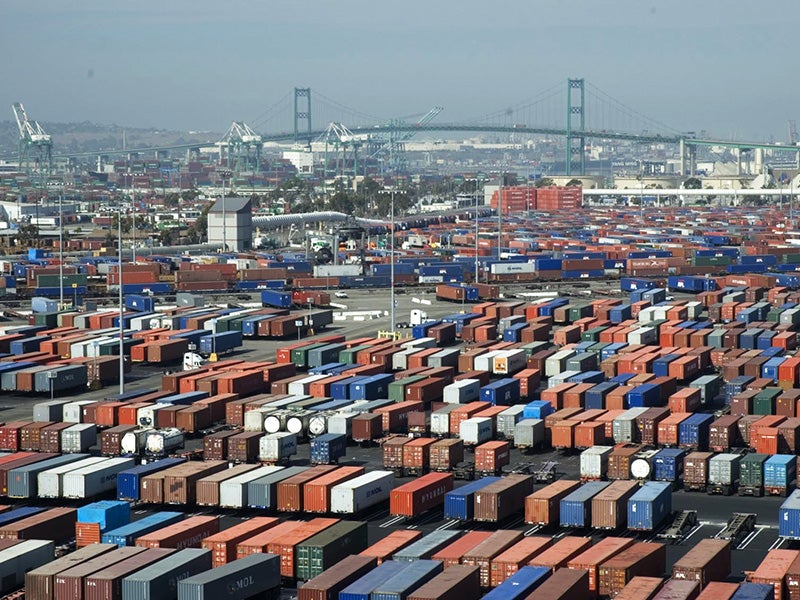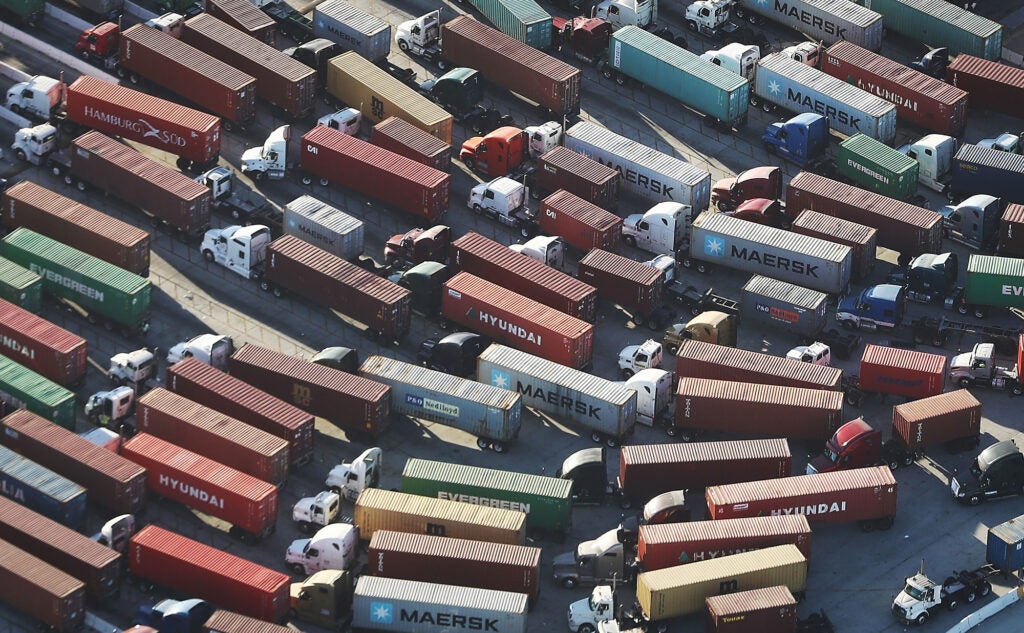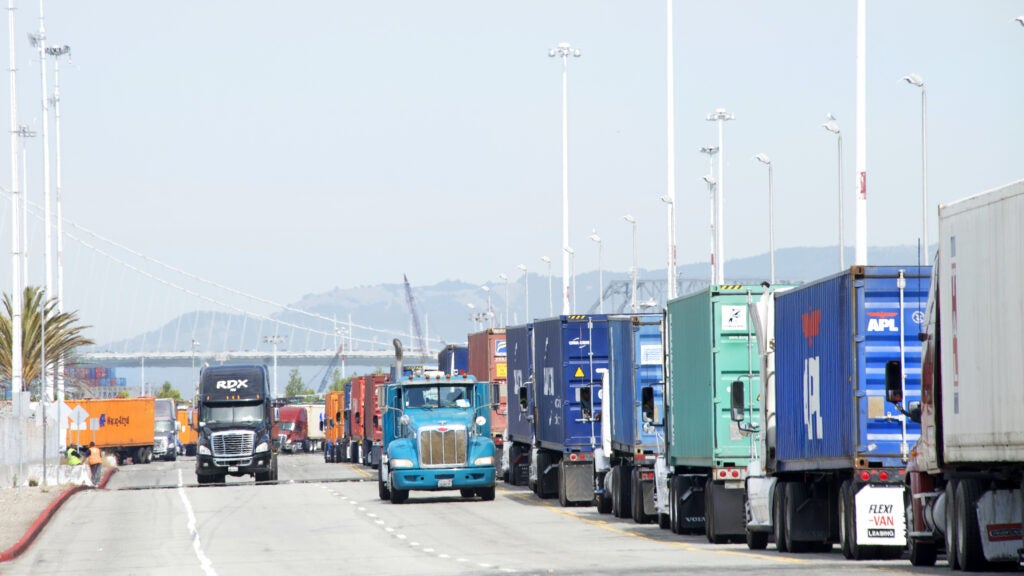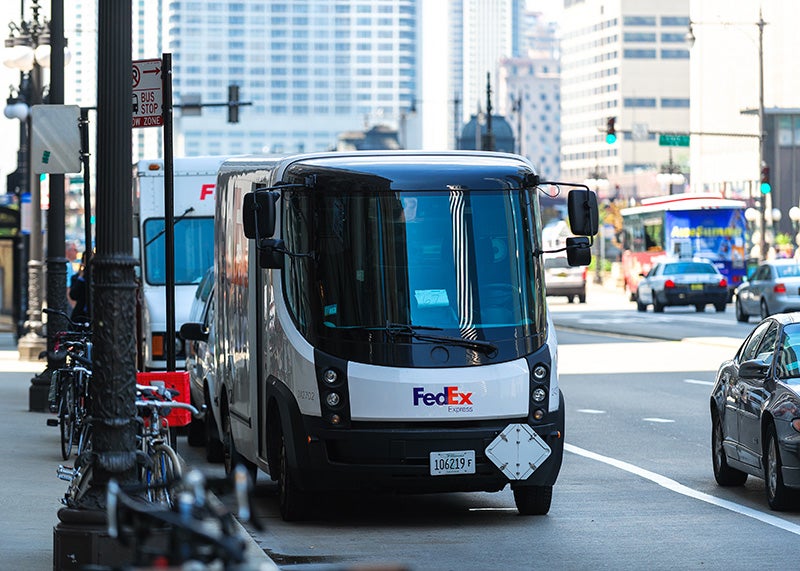March 10, 2023
Advancing Zero-Emission Medium and Heavy-Duty Vehicles and Environmental Justice Through the Inflation Reduction Act
President Biden signed the Inflation Reduction Act (IRA) into law in August 2022. The landmark bill includes an estimated $369 billion in grants, rebates, loans, and tax credits, to address climate change and pollution.
A number of programs, described below, can be accessed by businesses, communities, school districts, and local and state governments to accelerate the transition to zero-emission medium- and heavy-duty vehicles (MHDV).
Agencies will be releasing further guidance on these programs in the coming months.
I. Grants, Rebates, and Loans
The U.S. Environmental Protection Agency is releasing information and guidance on its IRA-funded programs. Find updated information.
Grants to Reduce Air Pollution at Ports: $3 billion

What is it?
- These grants provide $3 billion in competitive grants and rebates to purchase or install zero-emission port equipment and for relevant planning and permitting.
- Funds can also be used for climate action planning at ports.
- At least $750 million of this is reserved for ports in nonattainment areas.
- Zero-emission port equipment is defined as producing zero emissions of any air pollutant, or capturing 100% of emissions produced by an ocean-going vessel at berth.
Who is eligible?
- Port authorities
- State / regional / local / Tribal agencies that have authority over a port
- Air pollution control agencies
- Nonprofit and private entities that own / operate equipment in partnership with a port authority or air pollution agency

How long are the funds available?
Until September 30, 2027
Who is the administering agency?
EPA
Clean Heavy-Duty Vehicles: $1 billion

What is it?
- $1 billion in competitive grants and rebates will be granted to eligible recipients to help purchase zero-emission class 6 and 7 vehicles (e.g. buses, refuse trucks) and related infrastructure, as well as to fund workforce development, training and related planning activities. $400 million of this is reserved for vehicles serving one or more communities in nonattainment areas.
- Purchased vehicles must replace a non-zero-emission vehicle, and these grants are intended to cover the “incremental cost,” which is the difference between the cost of zero-emission vehicle and non-zero-emission vehicle.
Who is eligible?
- States
- Municipalities
- Tribal governments
- Nonprofit school transportation associations
- Eligible contractors who sell, lease, license, or contract for service ZEVs or charging or other equipment needed to charge, fuel, or maintain ZEVs

How long are the funds available?
Until Sept. 30, 2031
Who is the administering agency?
EPA
Diesel Emissions Reductions: $60 million

What is it?
- $60 million available for grants, rebates, and loans to identify and reduce diesel emissions resulting from goods movement facilities and related vehicles in low-income and disadvantaged communities.
Who is eligible?
- Regional, state, local, or Tribal agencies or port authorities with jurisdiction over transportation or air quality
- Nonprofit organizations or institutions that represent or provide pollution reduction or educational services to persons or organizations that own or operate diesel fleets; or has, as its principal purpose, the promotion of transportation or air quality
- Any private individual or entity that is the owner of record of a diesel vehicle or fleet operated pursuant to a contract, license, or lease with a Federal department or agency or an entity described above

How long are the funds available?
Until Sept. 30, 2031
Who is the administering agency?
EPA
Environmental and Climate Justice Block Grants: $3 billion

What is it?
- $2.8 billion for grants for projects up to three years in length, including:
- Community-led air and other pollution monitoring, prevention, and remediation, and investments in low- and zero-emission and resilient technologies and related infrastructure and workforce development that help reduce greenhouse gas emissions and other air pollutants; and
- Facilitating engagement of disadvantaged communities in State and Federal advisory groups, workshops, rulemakings, and other public processes.
- An additional $200 million is available for related technical assistance.
Who is eligible?
- Partnerships between a Tribal government, a local government, or an institution of higher education and a community-based nonprofit organization
- Community-based nonprofit organizations
- Partnerships of community-based nonprofit organizations

How long are the funds available?
Until Sept. 30, 2026
Who is the administering agency?
EPA
What is the status?
EPA has opened applications for two grants programs under the Environmental and Climate Justice Block Grants program. More information.
Greenhouse Gas Reduction Fund: $26.97 billion

What is it?
- $7 billion in competitive grants to invest in rooftop solar and other zero-emission technologies in low-income and disadvantaged communities.
- Nearly $20 billion in competitive grants to invest in projects that reduce greenhouse gas emissions, with at least $8 billion reserved for projects in low-income and disadvantaged communities.
Qualified projects:
- A project, activity, or technology that reduces or avoids greenhouse gas emissions and other forms of air pollution.
- EPA will release guidance clarifying which types of projects and activities are eligible in the coming months.
Who is eligible?
- For the first grant program ($7 billion) state, local, and Tribal governments, as well as nonprofit financing organizations (i.e. green banks and community development financial institutions) are eligible.
- For the rest of the funds, nonprofit financing organizations are eligible.

How long are the funds available?
Until Sept. 30, 2024
Who is the administering agency?
EPA
What is the status?
- EPA has released information on the initial program design.
- EPA anticipates opening competitions for funding under this program in early summer 2023.
II. Tax Credits
The Internal Revenue Service has begun releasing information and guidance on tax credits from the IRA. Find updated information.
45W Qualified Commercial Clean Vehicles

What is it?
- This credit applies to fuel cell vehicles (FCVs), battery electric vehicles (BEVs), and plug-in hybrid vehicles (PHEVs).
Who is eligible?
- Businesses
How much is available?
- The credit is equal to the lesser of:
- 15% of the vehicle’s cost in the case of a PHEV, 30% for BEVs and FCVs, or
- The “incremental cost” of the vehicle relative to a comparable vehicle, which is the difference in cost between a qualified clean vehicle and a conventional vehicle, as determined by the IRS.
- The credit is capped at $7,500 for vehicles weighing less than 14,000 pounds, and $40,000 for vehicles weighing 14,000 pounds or more.

When does this expire?
Applies to vehicles acquired before Jan. 1, 2033
What else?
Tax-exempt entities can receive the credit and elect for direct payment.
30C Alternative Fuel Refueling Property Credit

What is it?
- This credit applies to charging infrastructure as well as refueling stations for fuel cells and other alternative fuels.
Who is eligible?
- Individuals and businesses
How much is available?
- For individuals installing chargers at home, the credit is 30%, with a limit of $1,000 per charger.
- For businesses, the base credit is 6% per property for businesses, up to $100,000 per charger. If certain labor provisions are met, the credit is 30% instead.

When does this expire?
Applies to property placed in service before Jan. 1, 2033
What else?
- Starting in 2023, charging and refueling property is only eligible if placed in service within a low-income or rural census tract.
- This credit can be used for chargers / refueling stations for 2- and 3-wheeled vehicles intended for use on public roads.
- In the case of a refueling property sold to a tax-exempt entity, the taxpayer selling the property may claim the credit.
For more information: Athena Motavvef, Earthjustice Legislative Representative, amotavvef@earthjustice.org
Established in 1989, Earthjustice's Policy & Legislation team works with champions in Congress to craft legislation that supports and extends our legal gains.